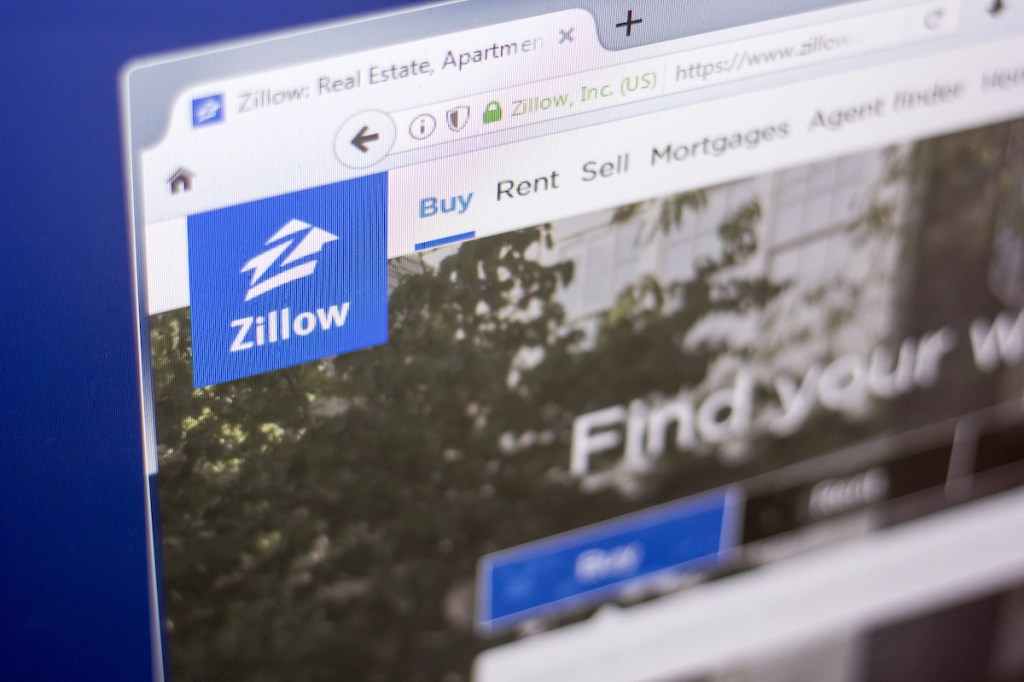Zillow is famous for its database of home listings, but over the last three years the company has branched out into the entire real estate lifecycle: buying, selling, renting, financing and remodeling homes. The company’s third-quarter earnings outline the benefits of that strategy, as Zillow was able to take advantage of increased purchase and refi demand amid low rates.
According to its earnings report, Zillow’s mortgage revenue grew 114% to $54 million in Q3. Within the mortgage segment, its origination revenue grew more than 300% year over year and for Q4, Zillow estimates a range of between $49 million to $53 million.
Mortgage revenue was a small part of Zillow’s total third-quarter revenue of $657 million, which exceeded analyst expectations of $572 million. The company wrapped the quarter with the highest cash and investment balance in its history, growing cash and investments to $3.8 billion from $3.5 billion at the end of Q2.
Zillow raised eyebrows all over the mortgage industry when it bought Mortgage Lenders of America in 2018 and then launched Zillow Home Loans in 2019.
Back in 2015, former Zillow CEO Spencer Rascoff said that the company viewed itself as a media company, not a real estate company.
“We sell ads, not houses,” Rascoff said at the time. “We’re all about providing consumers with access to information and then connecting them with local professionals. And we do a great job of giving those local professionals high-quality leads, they’ll covert those leads to at a high rate and then want more media impressions from us. So we’re not actually in the transaction, we’re in the media business.”
Refi Sugar High: How to balance your diet
The industry experts at TMS have compiled a list of proactive steps to take to ensure that your business will be prepared when the refi sugar high ends.
Presented by: TMS
That all changed in 2017 when the company started getting in the transaction with Zillow Offers, following the success of iBuyers like Opendoor.
The company’s third-quarter mortgage revenue helped offset the pandemic challenges the company faced in its Zillow Offers and Zillow Homes divisions. Zillow’s Homes revenue fell to $187 million in the third quarter, down 51% year over year.
Zillow said the decrease is because “the temporary pause in home-buying activities in the first half of 2020 resulted in lower inventory available for resale during Q3.” The company, which announced late last month that it was cutting 80 jobs for realignment, purchased 808 homes and sold 583 during Q3.
Meanwhile, Zillow’s Premier Agent revenue was $299 million in Q3, up 24% year over year. And traffic to Zillow Group’s mobile apps and websites reached a record of 236 million average monthly unique users, an increase of 21% year over year. This drove 2.8 billion visits during Q3, an increase of 32% year over year.
With a database of more than 110 million U.S. homes, Zillow’s reach with consumers draws comparisons to Amazon and keeps those in real estate and mortgage on high alert as the company continues its expansion.
With rate lock data from Black Knight suggesting that 2020 will end with over $4 trillion in mortgage origination volume, Zillow’s mortgage share this year is a small sliver of a great big pie. The question for mortgage lenders is how they’re going to compete with Zillow when that pie shrinks down to normal size — as it inevitably will.








